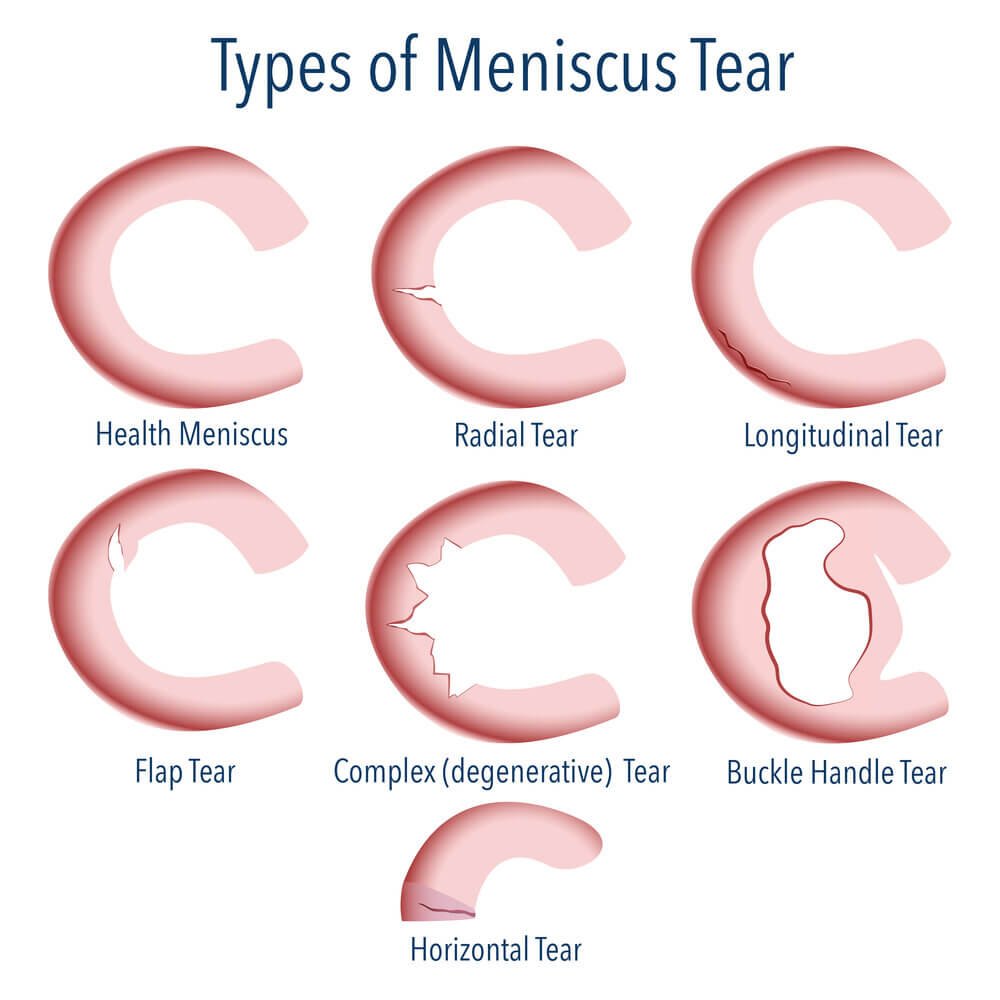Understanding Meniscus Tears: Meniscus Tear Recovery

Think of your knee as a complex machine with lots of moving parts, and the meniscus is one of the most important. It’s like a shock absorber, cushion, and stabilizer all rolled into one.
Anatomy and Function of the Meniscus, Meniscus tear recovery
The meniscus is a C-shaped piece of cartilage that sits between your thighbone (femur) and shinbone (tibia). It acts as a shock absorber, distributing weight evenly across the knee joint. It also helps to keep the knee stable and provides a smooth gliding surface for the bones to move on.
Types of Meniscus Tears
Meniscus tears can happen in different ways, leading to various types of tears.
- Medial Meniscus Tear: This occurs on the inner side of the knee, often caused by twisting or pivoting movements. Imagine a basketball player landing awkwardly after a jump.
- Lateral Meniscus Tear: This happens on the outer side of the knee, and is less common than a medial tear. Think of a tennis player trying to hit a ball with a sudden twist of the knee.
- Bucket-Handle Tear: This is a more severe tear where a large piece of the meniscus is torn loose and can get trapped in the joint, causing the knee to lock. Picture a soccer player trying to tackle the ball and their knee suddenly gives way.
Causes of Meniscus Tears
These are the most common culprits for meniscus tears:
- Sports Injuries: Athletes in high-impact sports like basketball, football, and soccer are at higher risk. Think of a runner tripping on a uneven surface and twisting their knee.
- Age-Related Degeneration: As we get older, the meniscus can wear down and become more susceptible to tears. Imagine a middle-aged person suddenly experiencing knee pain after a gardening session.
- Direct Impact: A direct blow to the knee, like a car accident, can cause a meniscus tear. Picture someone falling down the stairs and landing directly on their knee.
Symptoms of a Meniscus Tear
If you have a meniscus tear, you might experience one or more of these symptoms:
- Pain: You might feel a sharp pain at the time of the injury or a dull ache that worsens with activity.
- Swelling: Your knee may swell up, especially if there is bleeding inside the joint.
- Locking: Your knee may lock or catch, making it difficult to straighten or bend.
- Stiffness: You may have trouble moving your knee fully.
- Clicking or Popping: You may hear or feel a clicking or popping sensation when you move your knee.
Treatment Options for Meniscus Tears

So, you’ve got a torn meniscus. That’s like a tiny, rubbery donut in your knee that’s decided to go on a little adventure and tear itself apart. Now what? Fear not, brave adventurer, because there are options, and you’re not alone on this journey! We’ll explore the different ways to treat a torn meniscus, from the conservative approach to surgery, and help you understand what might be best for your unique situation.
Conservative Treatment
Conservative treatment aims to help your knee heal without surgery. It’s like a gentle nudge to get things back on track. Think of it as a peaceful, less invasive approach, like a yoga retreat for your knee. Here are the common methods:
- RICE (Rest, Ice, Compression, Elevation): This is the first-line treatment for most meniscus tears. It’s like a soothing spa treatment for your knee, reducing inflammation and pain.
- Physical Therapy: Think of this as a personal trainer for your knee. It helps strengthen the muscles around your knee, improve flexibility, and regain your range of motion.
- Pain Medication: Over-the-counter pain relievers like ibuprofen or acetaminophen can help manage pain and inflammation.
Surgical Treatment
Sometimes, conservative treatment isn’t enough, and surgery becomes necessary. It’s like a more involved approach, a little like a knee-specific renovation project. Here are the common surgical procedures:
- Arthroscopic Surgery: This is the most common type of surgery for meniscus tears. It’s a minimally invasive procedure, like a tiny window into your knee. A surgeon inserts a small camera and surgical instruments through small incisions, allowing them to repair or remove the torn part of the meniscus.
Meniscus tear recovery – Recovering from a meniscus tear can be a real knee-slapper, but it’s important to stay positive. Just ask Justin Jefferson, who knows a thing or two about injuries. You can read more about his recent setback and its impact on the Vikings’ fantasy outlook here.
Of course, while his injury may be a blow to the Vikings, a meniscus tear is a common injury that can be managed effectively with the right treatment and rehabilitation. So chin up, and remember, even with a torn meniscus, you can still be a champion!
Meniscus tear recovery can be a long and arduous journey, filled with the joys of physical therapy and the delights of ice packs. It’s a reminder that even the most athletic individuals, like JJ McCarthy , can experience the agony of a knee injury.
But fear not, with dedication and a healthy dose of humor, even the most stubborn meniscus tear can be conquered.
